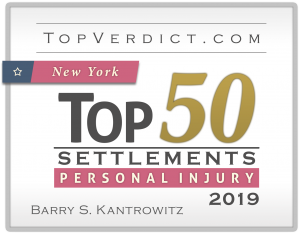 While the vast majority of motorists are accustomed to seeing 18 wheelers and commercial trucks on busy freeways, many fail to realize that these tractor trailers have sizable blind spots, making them vulnerable to serious collisions.
While the vast majority of motorists are accustomed to seeing 18 wheelers and commercial trucks on busy freeways, many fail to realize that these tractor trailers have sizable blind spots, making them vulnerable to serious collisions.
These blind spots – areas where the truck driver can no longer see other vehicles — account for hundreds of thousands of accidents each year. Some passenger car drivers are lulled into a false sense of security because truckers are higher off the ground, where visibility should be better. In reality, truckers have several areas around the semi where approaching cars are blocked from view. In the trucking industry, these blind spots are called “No Zones.”
Due to the alarming number of truck accidents caused by blind spots, the attorneys at Kantrowitz, Goldhamer & Graifman, P.C. have compiled some tips on how to recognize these No Zones and avoid a catastrophic accident. We want to remind motorists that safely sharing the road with 18 wheelers, semis and big rigs requires caution, patience and a through appreciation of a truck’s blind spots.
Where are a truck’s blind spots?
Blind spot accidents involving heavy trucks often result in life-threatening – if not fatal — injuries if the passenger vehicle is forced off the highway or hits the tractor trailer at high speeds. So how do you avoid a blind spot truck accident? The first step is understanding where a truck’s No Zones are located, and reminding yourself that if you cannot see the truck driver’s face in the side mirror, they can’t see you either.
Commercial trucks have three main blind spots:
- Side blind spots—Tractor trailers, due to their immense size and height, have large No Zones on both sides of the truck that angle out and back. Driving in these areas can put you in a hazardous position of being sideswiped by a trucker who can’t see you. The right side of the truck has an even larger blind spot extending nearly the length of the trailer, and is considered the most dangerous No Zone since commercial trucks make very wide right-hand turns.
- Front blind spot – Truck drivers have another blind spot that covers roughly 20 feet directly in front of the engine. In this No Zone, passenger cars literally disappear from view.
- Rear blind spot: Tailgating behind a big rig may be the last mistake you ever make since truck drivers have no rearview mirrors and must rely on their side mirrors to check on surrounding traffic. The rear No Zone extends some 200 feet from the back of the truck.
Tips to avoid no zone accidents with trucks
A truck’s side view mirrors are typically 25 inches tall. Despite their size, it doesn’t mean drivers can see motorists around them – particularly those who are driving in a No Zone area. While some truckers install wide angle mirrors, distance detectors and video cameras to help enhance visibility and reduce potential blind spots, motorists are urged to heed the following advice to avoid accident and injury.
- Do not linger in a truck’s No Zone
- Avoid tailgating behind a truck
- Allow a 4-second following distance behind trucks (approximately 20 car lengths)
- Always look for the driver’s face in the mirror before attempting to pass
- If you need to pass a truck, signal early and attempt to pass on the left side where their blind spot is smaller
- Pass quickly. If you are unable to do so, fall back and out of the truck’s blind spot
- Be alert to a truck’s turn signals, especially for right hand turns
- Remember that trucks make wide turns at intersections (especially right turns) and require additional lanes to maneuver
Truck drivers, like all motorists, are required to use reasonable care when behind the wheel. This means staying attentive, following the rules of the road and taking adequate steps to avoid harm to others. Vehicles of all sizes have blind spots. Just because a trucker couldn’t see you doesn’t absolve them from liability in the event of a blind spot collision.
Truck accident attorneys on your side
At the law firm of Kantrowitz, Goldhamer & Graifman, P.C., our legal team works relentlessly to obtain justice for victims of vehicle accidents caused by negligent tractor trailer drivers. Our talented Bergen County and Rockland County truck accident lawyers serve clients throughout New York and northern New Jersey metro areas.
Explore your options for legal recourse by contacting our NY and NJ law offices for a complimentary, private consultation. After discussing the circumstances of your blind spot truck accident, KGG attorneys can determine if you have a viable claim and pursue damages for medical expenses, loss of income, emotional distress, pain and suffering, property repairs and other losses. We work on a contingency fee basis, so we will not charge any legal fees unless a settlement or positive verdict is procured on your behalf.
Additional “Truck Blind Spot” Resources:
- Trucker’s Report, Truck Blind Spots: Know the Danger Zones https://www.thetruckersreport.com/truck-blind-spots-know-the-danger-zones/
- Business Wire, Truck Blind Spots and Stopping Distance Focus of Highway Safety Demonstration http://www.businesswire.com/news/home/20100526005236/en/Truck-Blind-Spots-Stopping-Distance-Focus-Highway
- Justia, Blind Spots https://www.justia.com/injury/motor-vehicle-accidents/truck-accidents/blind-spots/






